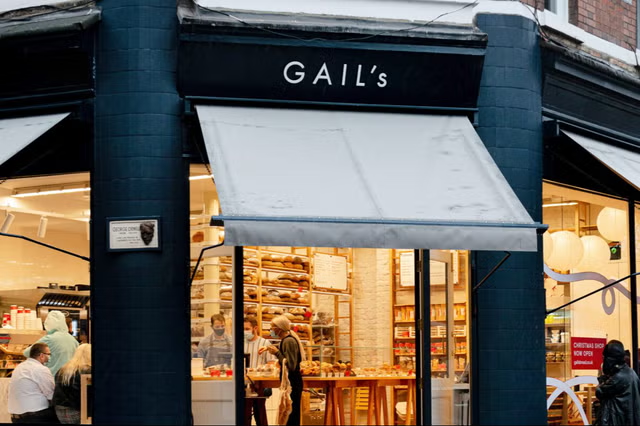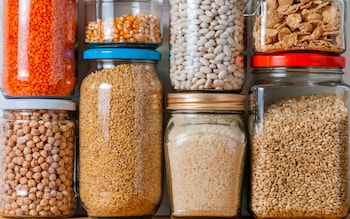For the top 20 dahlias to grow, click here
The dahlia is about to take centre stage in our borders and it will grab the limelight until the first frost brings the curtain down – and these days that could mean November. No other flower will carry you through from summer into late autumn with as much pizzazz and vibrance.
Among the categories, there are spiky cactus dahlias, which explode in the border like firecrackers, and prim and proper ball dahlias with comely ruffs of petals. There are gentle water lily types, impressions from a Monet painting; slightly sharper decoratives; and bee-friendly singles and semi-doubles.
The Honka dahlias, which look dismal in pictures, are highly effective in a mixed planting. Anne Barnard, of Rose Cottage Plants (see suppliers), tells me that ‘Honka Rose’ “looks as though someone has tossed a handful of pink stars into the air and they’ve landed where they fell”. The colour range is equally impressive.
Compact dahlias make great container plants. The Dark Angel Series combines small, single flowers and black, ferny foliage. Look out for ‘Star Wars’ (a yellow and orange); ‘Dracula’ (a dark-centred blood-red) and ‘Pulp Fiction’ (a neater clear-red). The Happy Series of dahlias has larger single flowers on long stems. My favourite is ‘HS Wink’, a raspberry-centred pink.
Velvety reds often have a touch of dark Guinness hues thrown in, and they won’t frazzle in hot sun as so many dark flowers do. There are soft peaches and pumpkin oranges that chime with mellow autumn days, and purples, pinks, lemons and whites. Sometimes the foliage is near-black, or military khaki.
The diversity of form, foliage and flower colour in dahlias is due to an octoploid tendency – which has nothing to do with the sea bed. In simplistic terms, the 40 or so Mexican species can have up to eight copies of the same gene. When the bees get busy you never know what’s going to pop up from the parental gene bank.
This explains how the brilliant-red, peony-flowered ‘Bishop of Llandaff’ spawned a fully-petalled, bronze-orange seedling, subsequently named ‘David Howard’.
Both are fantastic performers, with real staying power, and both have an ability to flower in poor summers. Fergus Garret, head gardener at Great Dixter in East Sussex, favours ‘David Howard’ for its “show-stopping charm” in the borders. This star performer was raised in 1958 by the late Suffolk nurseryman of the same name.
However, all that serendipity is a double-edged sword, because there are now so many dahlias on offer. New ones are constantly being raised and named by hobbyists and breeders. The cut-flower trade provides much of the impetus, for dahlias are the ultimate cut-and-come-again flower.
Show bench dahlias, symmetrical charmers disbudded to produce giant blooms, were once sized by passing the flowers through a set of rings. Many a good one landed on the cutting room floor, so to speak, but such is demand today that that’s all changed.
The wonderfully wispy whirligig christened ‘Waltzing Mathilda’, never a contender for showing, fought for and won an AGM on the RHS trial. The wild-looking, ferny foliage and ruffled, chrysanthemum-like blooms of ‘Soulman’, a rich burgundy, colour-washed in black, is another stunner that wouldn’t win a show category either.
The downsides to dahlias
There are drawbacks. You can’t get away with plonking a dahlia into a border, because these late starters only begin to get into their stride once the nights begin to get longer and cooler. This short-day tendency is shared by many late-flowering perennials – salvias, cosmos, penstemons – but their pigment-packed petals create a jewel-box quality that’s missing earlier in the year.
Garret has the solution: “We create semi-permanent gaps, or bedding pockets, in the borders and fill them with spring bulbs and bedding. We often use forget-me-nots and tulips. They’re removed in late May and then our dahlias go in.
“One of my favourites is the vivid-red ‘Witteman’s Superba’, a bold red cactus dahlia. It glows in front of a vertically striped green and cream grass, Miscanthus sinensis ‘Cosmopolitan’.”
Dedicated cutting gardens and allotments suit dahlias well; I don’t stake mine, but planting taller cosmos and Verbena bonariensis among them helps to provide support.
There’s always a debate about whether to leave them in the ground over winter, or to lift them. I’m on the side of lifting, once they’ve been frosted, because I lost the lot in 2012.
However, large tuber masses defy logic and produce less flower, not more, so regular division is needed, although there are exceptions. The man-high, rich-purple ‘Admiral Rawlings’ isn’t disturbed at Old Wollerton Hall in Shropshire – where Leslie Jenkins peps up her colour-themed borders with dahlias.
I store mine under the greenhouse bench, in large airy bread trays, and cover the muddy tubers with dry compost. They stay there, frost-free, until March, and then they’re divided (if needed) just as they start into growth.
How to grow dahlias so they come up and flower every year
- Order your tubers in the New Year. Store them in a cool, frost-free place until mid-March and pot them, preferably in a greenhouse fitted with a heater to keep frost out.
- Once temperatures approach 20C (70F) dahlias grow away enthusiastically. Pinching out the tip of the shoots encourages bushiness and you can you use the snippets for cuttings (see below).
- Harden off dahlias outside, from mid-May onwards, but cover with fleece if a frost is forecast. Don’t plant them outside until the beginning of June, as cold nights check their growth and a late frost can kill them.
- Add a small handful of blood, fish and bone to the planting hole and then apply one high-potash feed, such as Vitax Q4, on a damp day in June.
- Over-lavish feeding promotes foliage at the expense of flower.
- Once established, dahlias can survive without being watered thanks to their tuberous roots.
- Dark-leaved dahlias are more prone to slugs.
- Always deadhead to keep the flowers coming.
How to take cuttings
- Cuttings, taken in April and May, produce faster growing, stronger plants, but flower slightly later.
- Look for strong new shoots, about 2-3in in length (5-8cm), and cut the stem just above where it joins the crown – leaving a stub that will hopefully resprout.
- Trim underneath the lowest leaf joint of your cutting, using a sharp knife, and reduce any overlarge leaves by half.
- Use a mixture of compost with a little perlite and coarse grit. Water the pots and then position your cuttings round the edge of each pot, making sure that two-thirds of each cutting is submerged.
- Cover each pot with a clean plastic bag, or place in a propagator. They should root within 4-5 weeks.
- If you’re doing lots of cuttings, clean your knife between varieties to prevent the spread of viruses.

The top 20 dahlias to grow
‘Karma Choc’ AGM
The best of the Dutch-raised, cut-flower Karma series, with dark green leaves and plenty of fully double, velvet-textured maroon-red flowers held on rubbery dark stems. (90cm/ 3ft).

‘Thomas A. Edison’
This American-bred 1929 purple decorative livens up soft oranges, reds and mauve-infused whites. It stands out for its sheer flower power. Sarah Raven plants it with veg. (120cm/4ft).

‘Lilac Time’
This sport of ‘Thomas A. Edison’ is a favourite of Anne Barnard of Rose Cottage Plants: “It’s one of those dreamy lilac-blues and it has great form and dark stems.” (120cm/4ft).

‘Mexican Star’ (syn. ‘Mexican Black’)
This new hybrid, involving chocolate cosmos, has inherited the sultry red flowers and chocolate fragrance. Described by Sarah Raven as “a chocolate cosmos on steroids.” (75cm/18in).

‘Hootenanny’
This cherry-red collarette is one of the best, because the paler pink and white, flushed inner circle, or collar, of petals is neat and regular. Robust, with dark stems and dark foliage. (120cm/4ft).

‘Sam Hopkins’
A deep-red double dahlia shaded in black, with a hint of contrasting green in the calyx. Rather ordinary green foliage, but this is a strong doer that cuts well. (100cm or more/up to 4ft).

‘Penhill Watermelon’
A cut-flower favourite, with large, sunset-tinted peachy pink urchin-like flowers that twist and turn at the tips. Rather coarse green foliage. (140cm/4ft).

‘Hillcrest Royal’ AGM
A medium-sized, spiky, cactus dahlia with plenty of narrow quilled purple petals that appear to be infused with red ink. A Christopher Lloyd favourite. (120cm/4ft).

‘Muchacha’
A new dahlia (from Peter Nyssen) with dark stems and dark green foliage. The outermost pink petals have a dark picotee edge that matches the burgundy to blackcurrant centre. (65cm/27in).

‘Eveline’
A blush-white decorative dahlia, edged and flushed in soft lilac, which also forms a soft eye in the centre. This elegant dahlia never looks too glacial, in border or vase (120cm/4ft).

‘Fire Mountain’
Chosen by dahlia fanatic Andy Vernon, author of a Plant Lover’s Guide to Dahlias, for its “incredible tarmac-black foliage, architectural shape and fire-engine-red blooms”. (120cm/4ft).

‘Totally Tangerine’
A great edging or container dahlia, bearing lots of small, neatly formed anemone-centred flowers in shades of pink shot-silk, with barley sugar pincushions. Interesting green foliage. (60cm/24in).

‘Harriet G’
Raised by Jack Gott, this Cumbrian-bred water lily dahlia has creamy flowers with a citrus-yellow heart (jrgdahlias.com). A new Dutch lookalike called ‘Henriëtte G’ is one for the wishlist. (100cm/39in).

‘Stolz von Berlin’
A neatly formed mid-pink ball dahlia for cutting and border use. It’s strong, productive and reliable. ‘Wizard of Oz’ is similar, but paler and shorter. (90cm/3ft).

‘Otto’s Thrill’ AGM
Dinner-plate dahlias always wow the visitors at RHS Wisley. However, ‘Emory Paul’ often fails to flower further north. ‘Otto’s Thrill’ is more obliging, willingly producing soft-pink dinner plates. (120cm/4ft).

‘Knockout’ (syn. ‘Mystic illusion’) AGM
Raised in New Zealand by Keith Hammett, who also raised ‘Fire Mountain’. This airy sunshine yellow single has a crisp brown middle and deep brown foliage. (120cm/4ft).

‘Jowey Winnie’
This ball dahlia, one of the many prefixed Jowey, was raised in Belgium by Jozef Weyts, hence the Jowey name. This one is a subtle, old-brick pink, with a hint of bluish-purple and it’s long-stemmed, so good for cutting. (120cm/4ft).

‘My Love’
White flowers are hard to place in borders, but this readily available semi-cactus has a cool hint of green. It’s strong and dependable and makes a large robust plant, flowering for months on end. (100cm/ 39in).

‘Gryson’s Yellow Spider’
This very spiky, clear-yellow Belgian-bred cactus dahlia with incurving petals arranges its flowers well in a border, adding bursts of moonlight. (120cm/4ft).

‘Gallery Art Deco’ AGM
A compact apricot-orange, with a darker centre, showing red undersides as the petals twist and turn. ‘Art Nouveau’, also AGM, is a vivid pink with darker backs to the petals. (40cm/16in).

Best dahlia suppliers
- Rose Cottage Plants (01992 573 775).
- Halls of Heddon (01661 852445).
- Peter Nyssen (0161 747 4000).
- Riverside Bulbs (01449 741551)
Disclaimer: The copyright of this article belongs to the original author. Reposting this article is solely for the purpose of information dissemination and does not constitute any investment advice. If there is any infringement, please contact us immediately. We will make corrections or deletions as necessary. Thank you.



